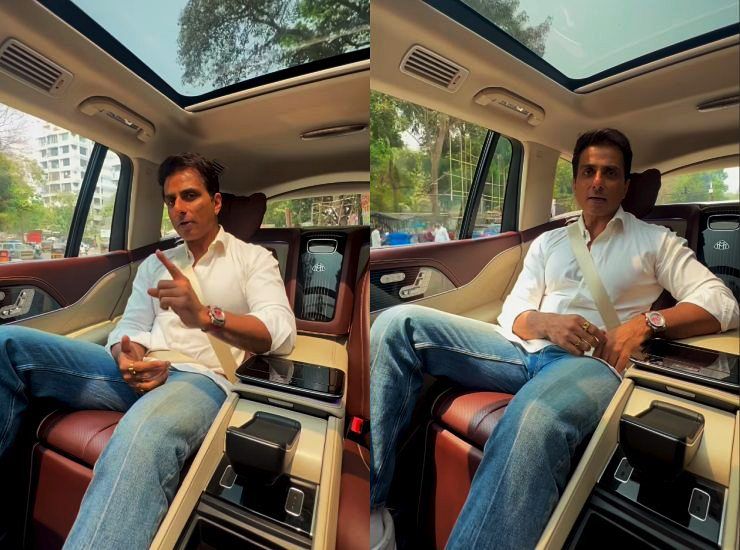Indian Drivers Hate Wearing Seatbelts: Here's Why


Seatbelts remain one of the most misunderstood safety devices on Indian roads. Despite clear evidence of their life-saving role, many drivers continue to avoid using them, especially in hilly regions where myths about entrapment and discomfort persist.

The 2023 data from the Ministry of Road Transport and Highways paints a grim picture. A total of 16,025 people died because they weren’t wearing seatbelts - 8,441 were drivers and 7,584 were passengers. Another 40,597 were injured in seatbelt-related incidents.
Overall, India saw 480,583 road accidents in 2023, resulting in 172,890 deaths and over 462,000 injuries. Uttar Pradesh reported the highest number of seatbelt-related deaths, followed by Madhya Pradesh.
Interestingly, states like Uttarakhand and Himachal Pradesh, where anti-seatbelt sentiment runs high, ranked lower on this list. This shows that while geography and terrain play a role, perception and local driving culture are equally significant.
A large share of resistance comes from hilly regions. Drivers believe seatbelts limit movement and delay escape during emergencies such as landslides or falling rocks.
Many feel safer when they can move freely or jump out if needed. A Himachal-based private driver explained that he avoids seatbelts because he wants to keep an eye on the hill slopes above him while taking sharp turns.
This mindset is common among taxi drivers in mountain areas, who often cite local accidents to justify not wearing belts. One driver from Dehradun referred to a crash in Tehri where the seatbelted occupant reportedly died while the unbelted one survived.
These stories, though widely repeated, ignore basic crash science. Most fatalities occur not because people are trapped inside, but because they are thrown out of the vehicle during impact.

Experts have repeatedly debunked the belief that seatbelts are unsafe in hilly terrain. Rahul Mahajan, Senior Deputy Director at ARAI’s Passive Safety Lab, says there is no scientific proof that seatbelts increase accident risk in mountain driving. In fact, modern vehicles are engineered assuming all occupants are belted.
Global safety regulations such as FMVSS 216 and FMVSS 220 ensure roofs and cabins can withstand heavy impact, reducing the chance of collapse. According to safety experts, seatbelts prevent ejection - the single largest cause of death in rollovers. In hilly terrain, where rollovers are more common, wearing a belt becomes even more important.
Modern seatbelts are designed for quick release during emergencies. The buckle can be unlatched with just 10 kilograms of pressure, far below the force an average person can apply with one hand. Features such as pre-tensioners, load limiters, and adjustable shoulder straps have made belts both safer and more comfortable than before.

Beyond fear, many Indian drivers skip seatbelts simply because of discomfort or habit. City commuters often find the belt inconvenient during short trips or frequent stops. Rear-seat passengers ignore them entirely because enforcement is limited.
Cultural attitude plays a major role. There’s a widespread belief that “short drives don’t need seatbelts,” and that airbags alone are enough protection. Many also assume that wearing a belt is unnecessary in slow traffic or within city limits.
Police enforcement, though improving, remains inconsistent. In several cities, backseat violations rarely attract fines even though the law requires seatbelts for all occupants.
This casual attitude has created what experts call a “trust gap.” Drivers and passengers don’t trust the system or the equipment. Awareness drives, road safety workshops, and stricter fleet rules for taxis and school vehicles could help close this gap. Demonstrating how belts save lives, instead of simply issuing warnings, is seen as the better way to change behaviour.

Automakers have steadily improved vehicle safety to work in harmony with seatbelts. Reinforced cabins, curtain airbags, stronger roof pillars, and side-impact beams now protect passengers more effectively. Systems like emergency e-call automatically alert rescue teams after a crash, reducing delays in assistance.
In newer cars, seatbelt reminders and occupancy sensors are standard. Some even tighten the belt automatically when the system detects sudden braking or a sharp corner. Future restraint systems are expected to adjust belt tension based on passenger weight and position. Research is also focusing on minimising neck and chest injuries, especially for elderly occupants during rollovers.
The evolution from basic lap belts to modern three-point systems shows how safety has progressed. The challenge now lies in ensuring these systems are actually used every time a person sits in a car.

Despite myths, science is clear: seatbelts save lives. Whether on plains or mountains, they remain the first and most effective safety measure in any crash. The problem is not in the belt but in the behaviour.
Changing attitudes will take time and consistent effort. Public campaigns must focus on simple, relatable messages rather than technical jargon. Penalties should be backed by awareness drives in schools, offices, and transport hubs.
Manufacturers, policymakers, and citizens share equal responsibility. Until every driver and passenger accepts that buckling up is as automatic as starting the ignition, preventable deaths will continue. India’s road safety battle will only be half-won until wearing a seatbelt becomes second nature.